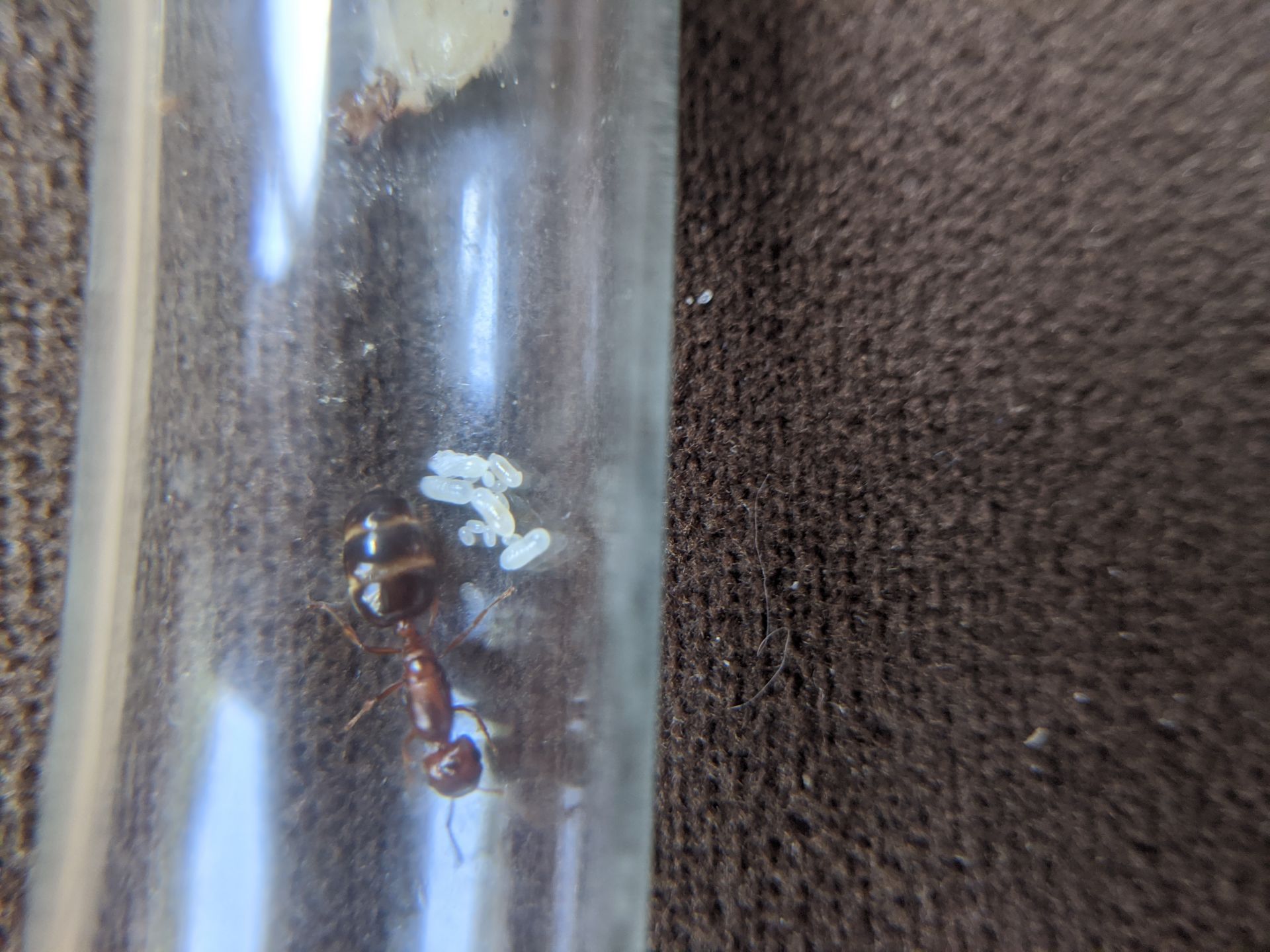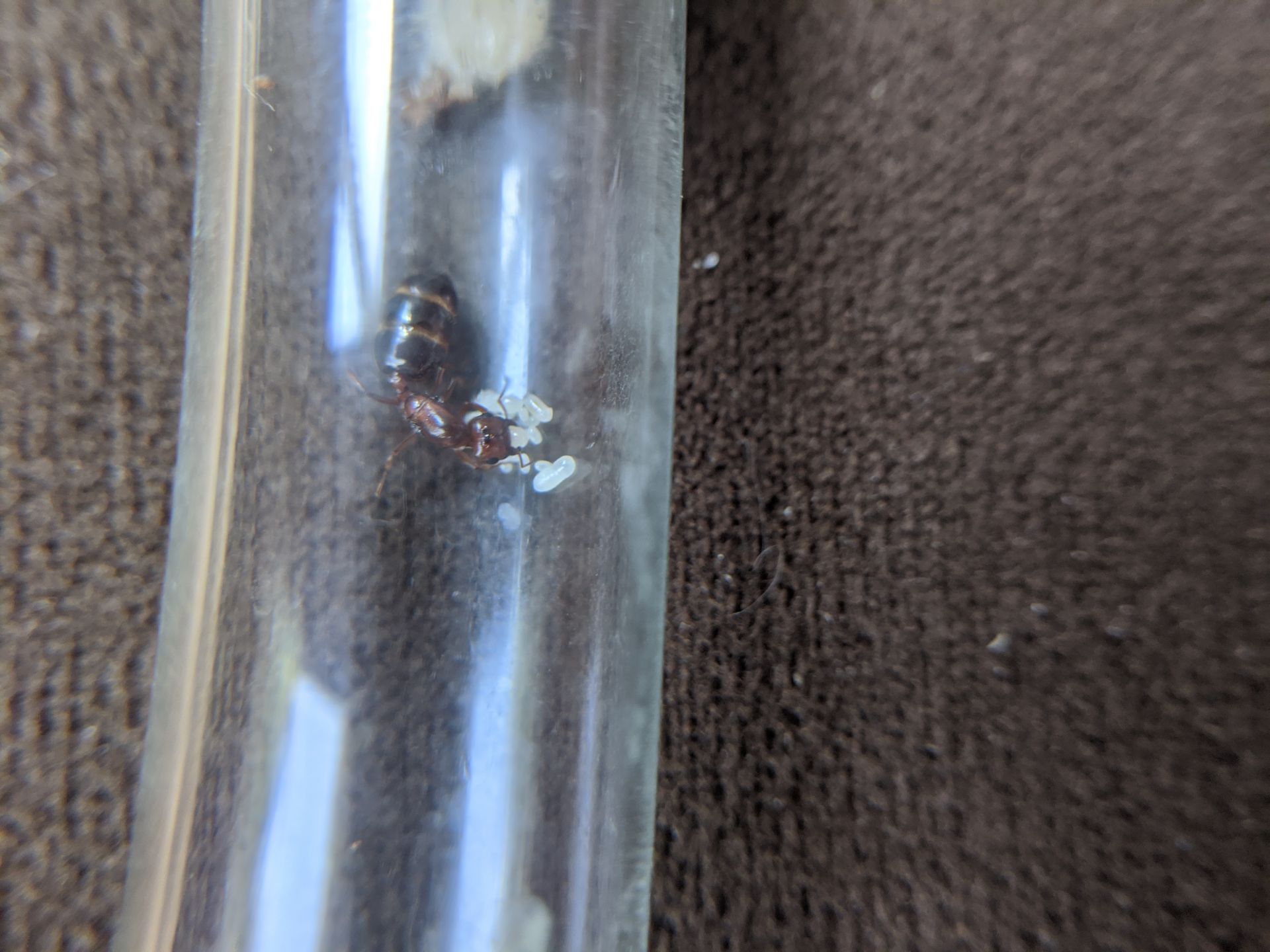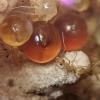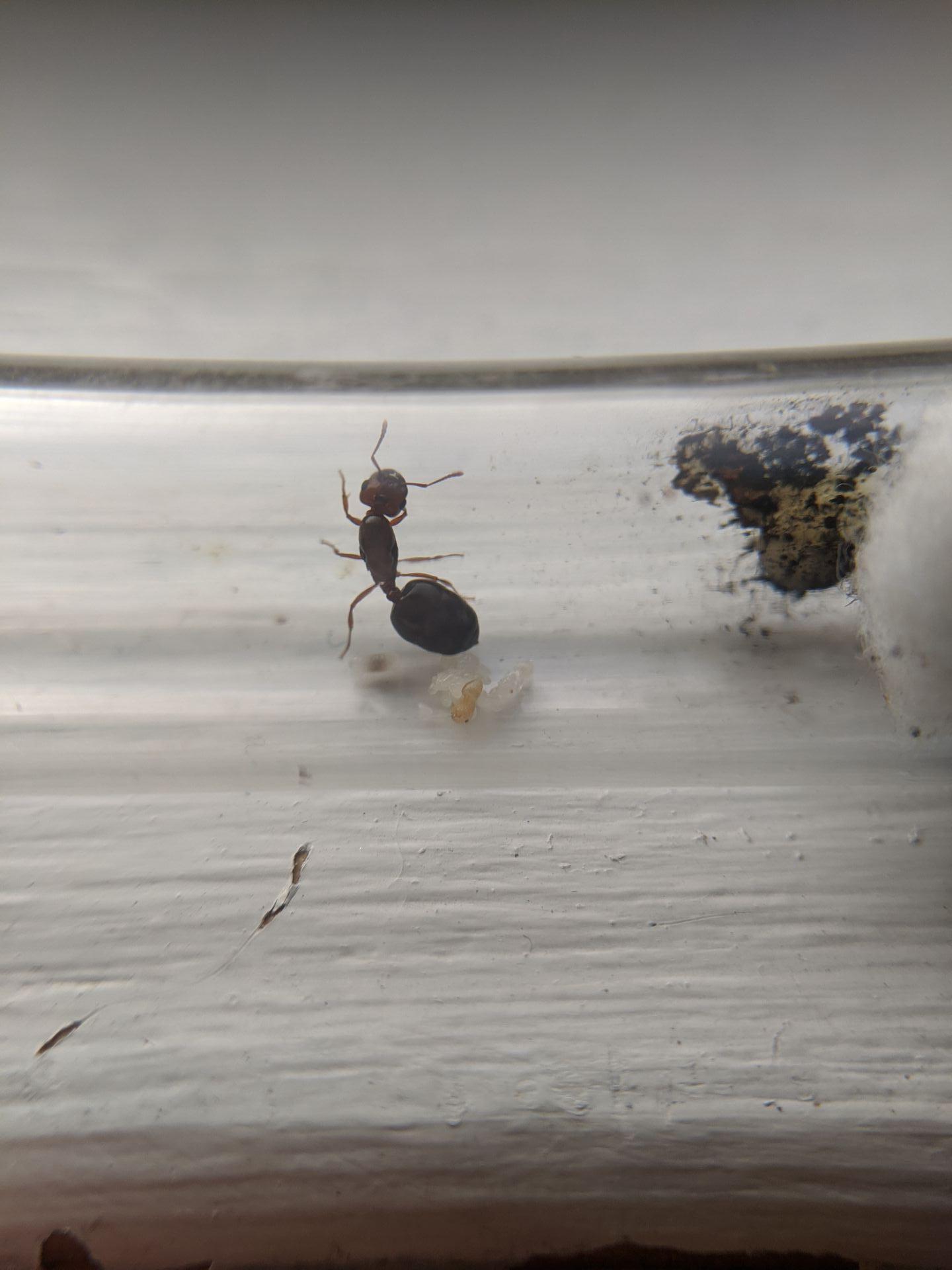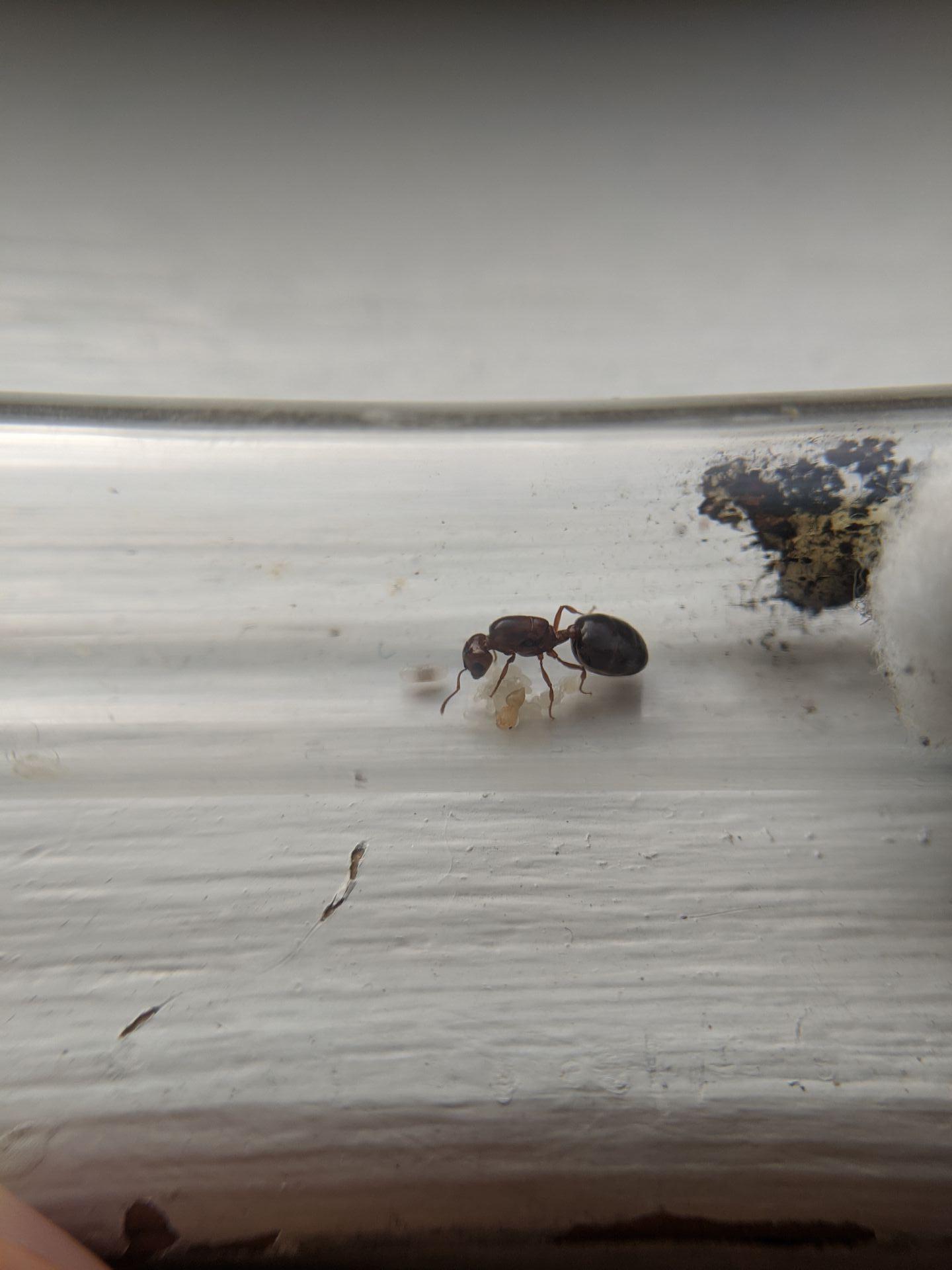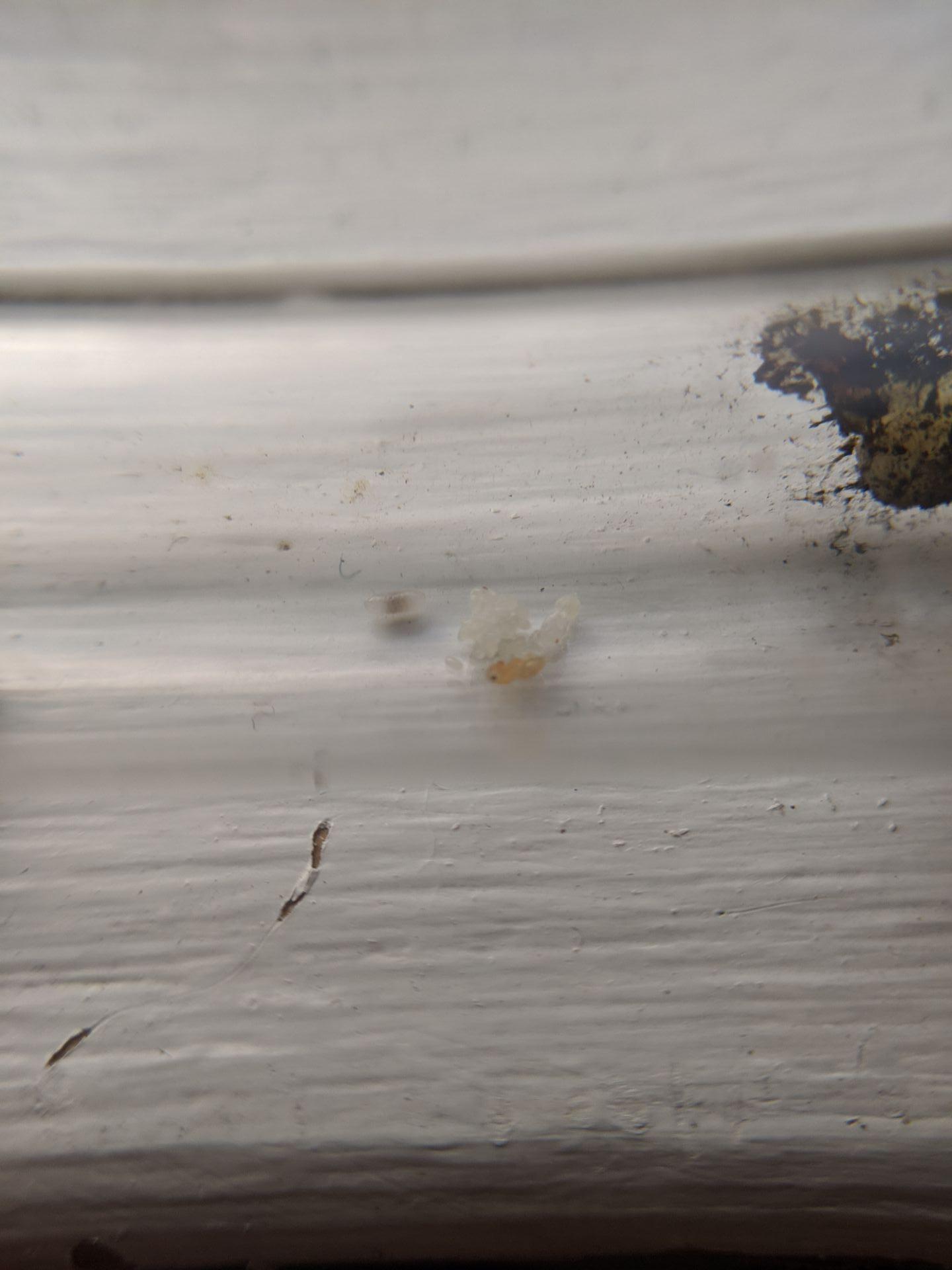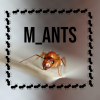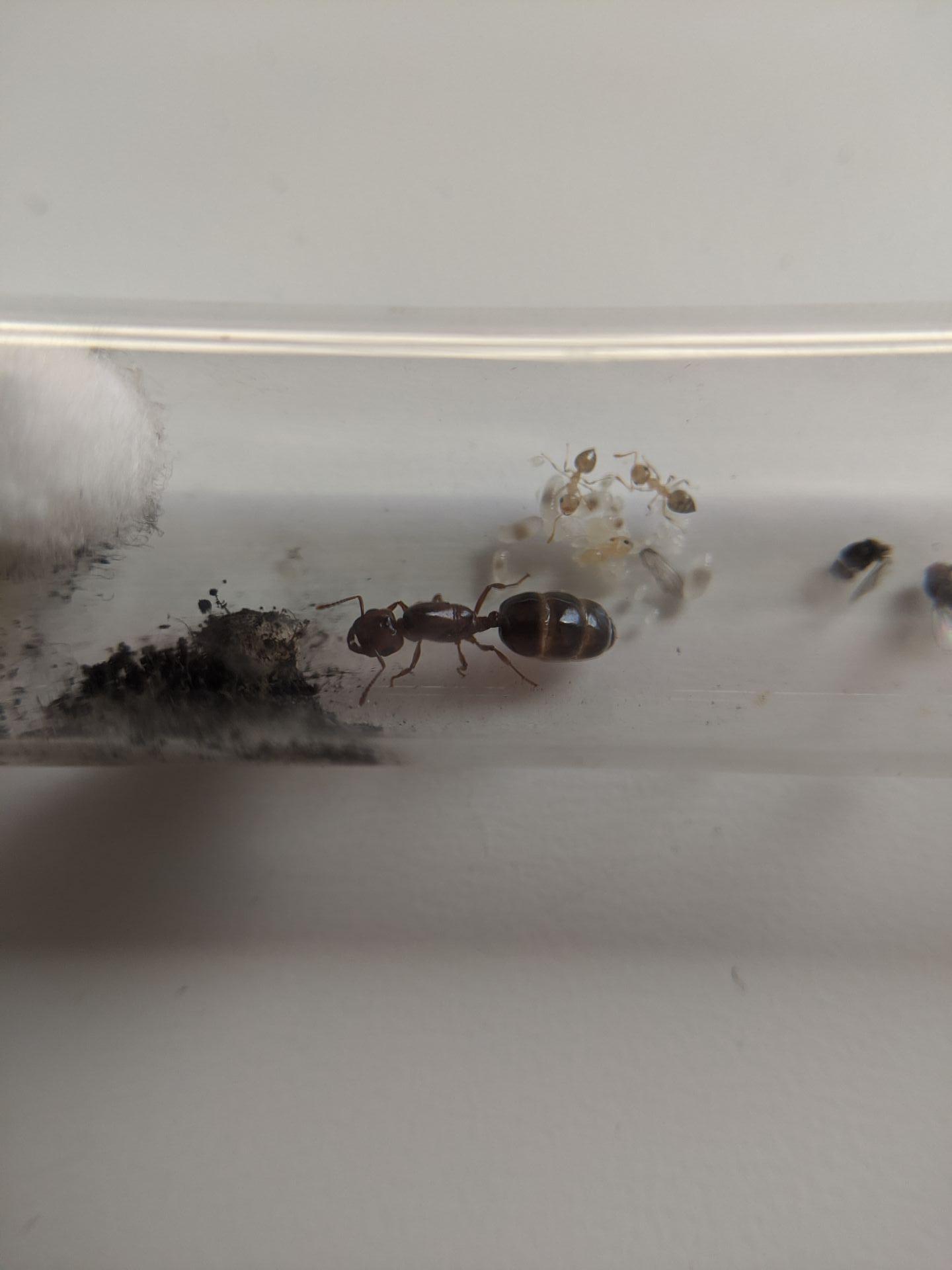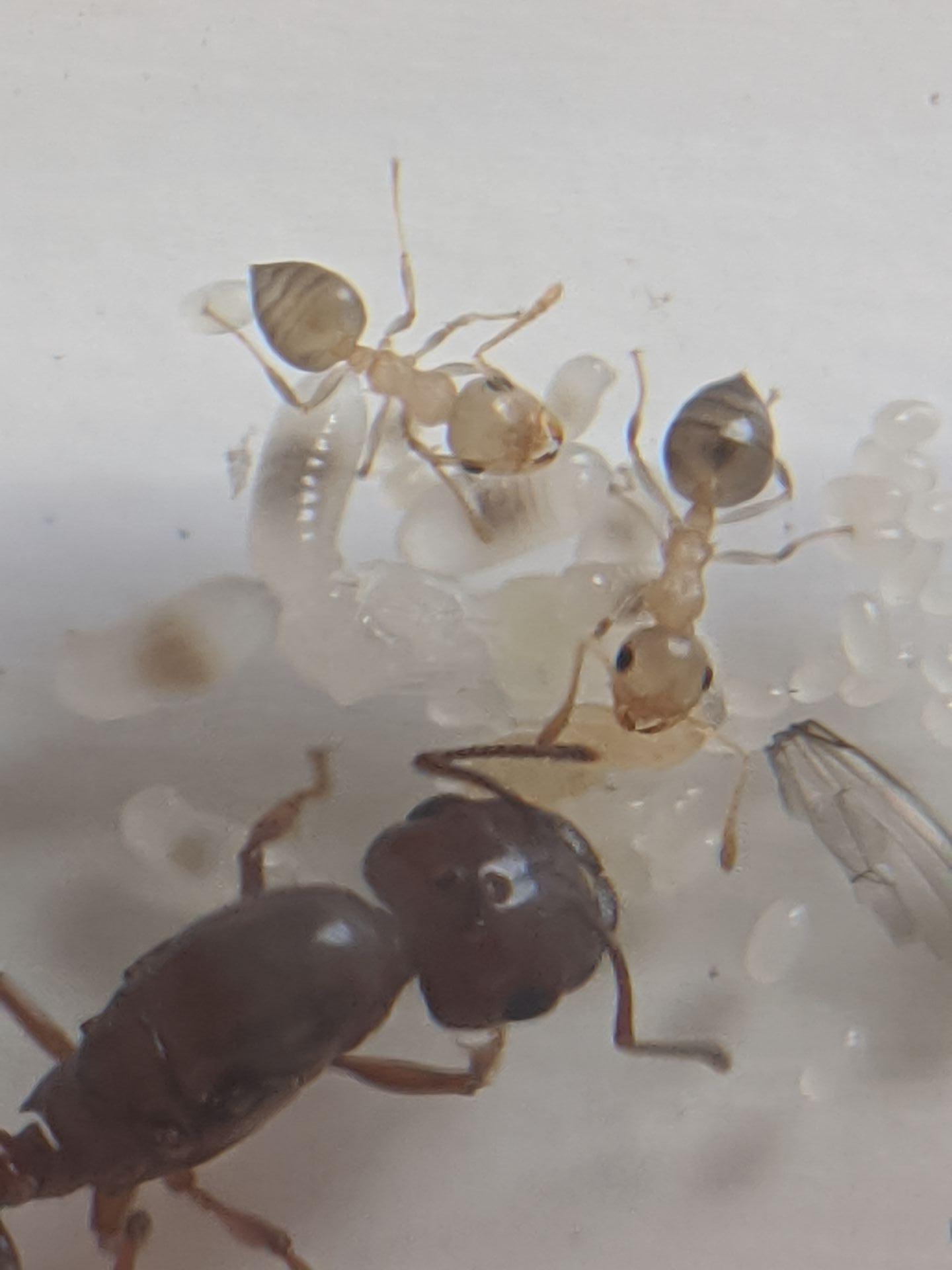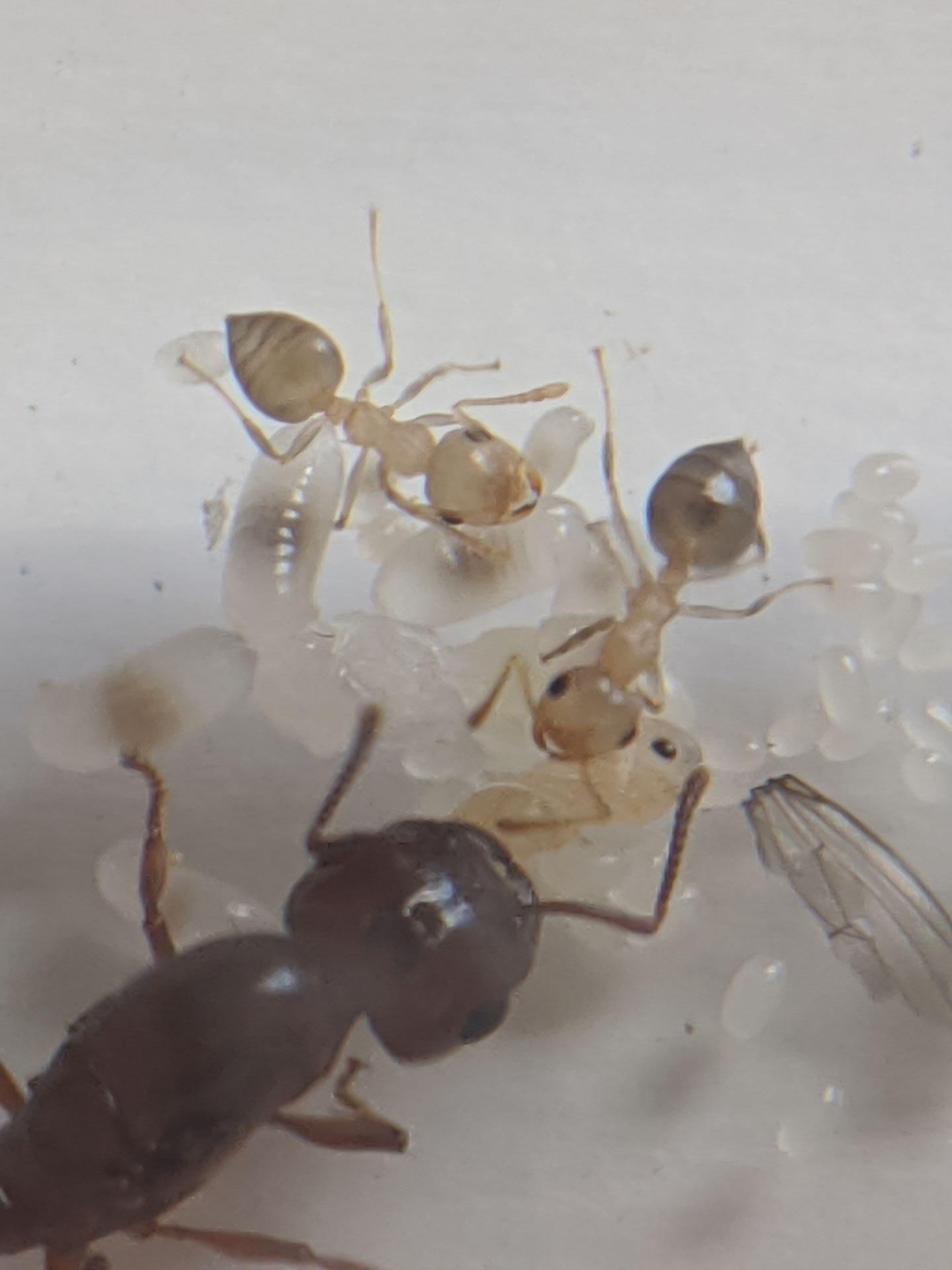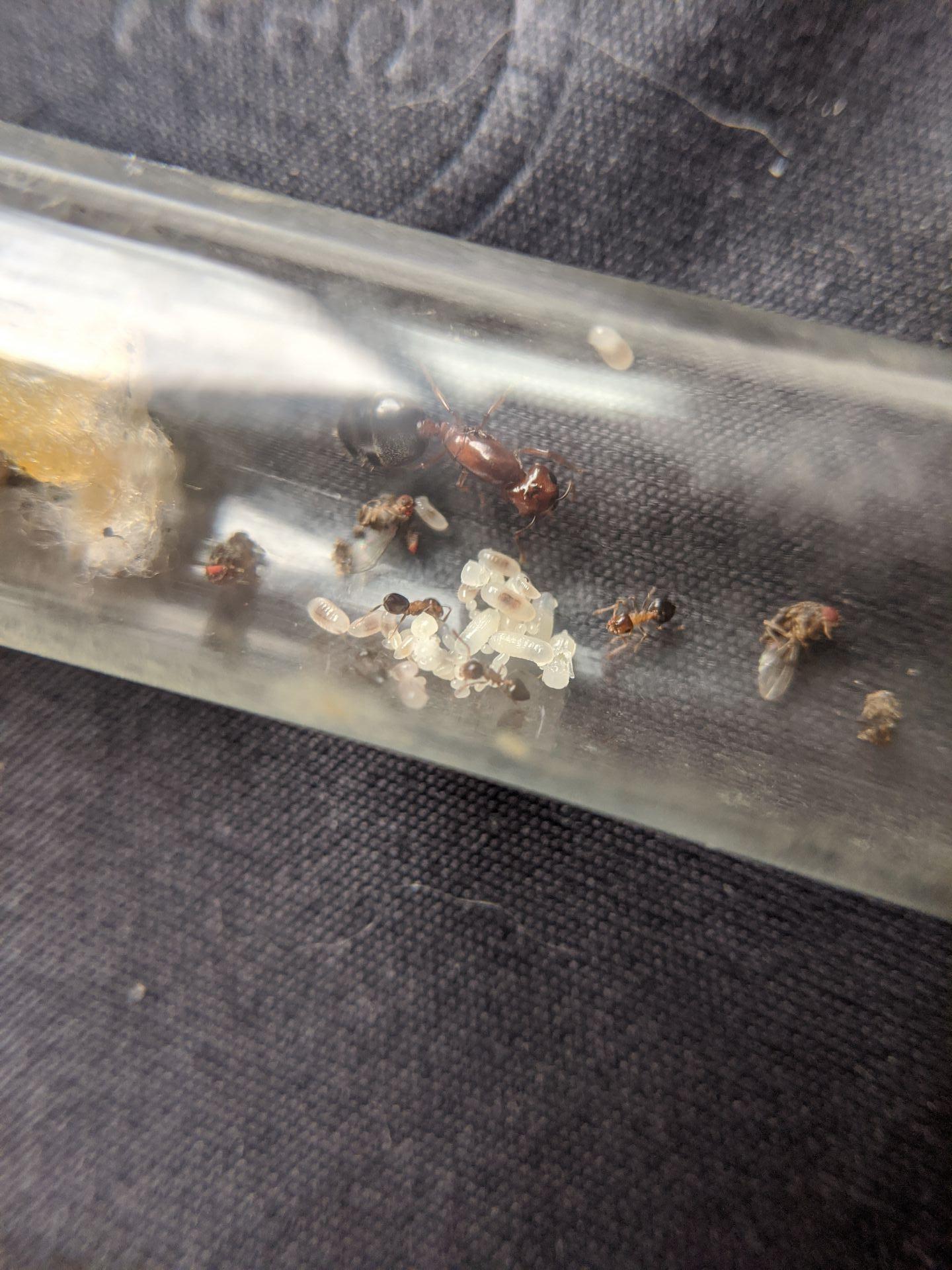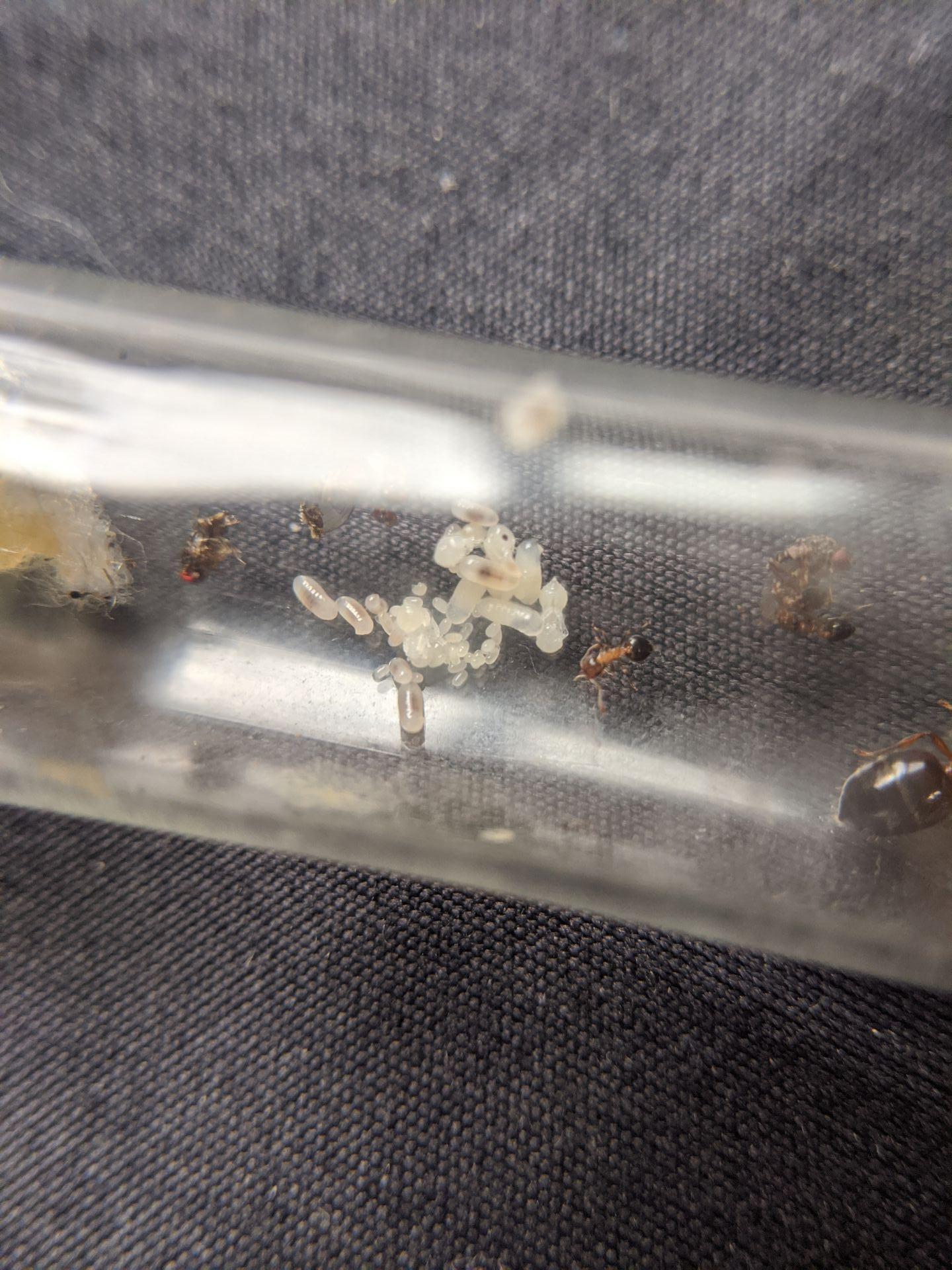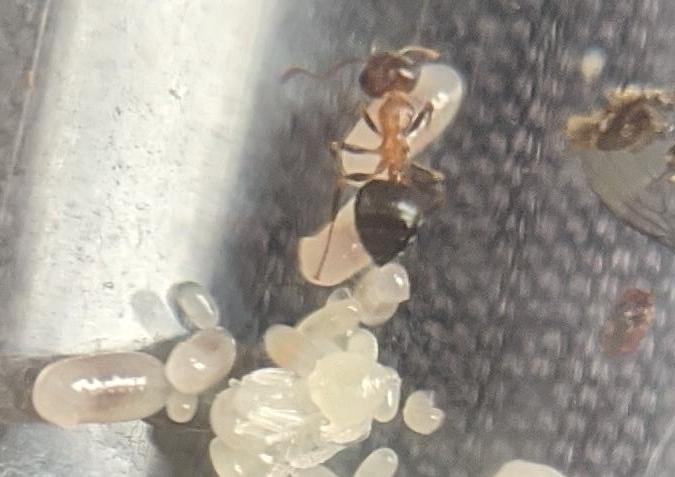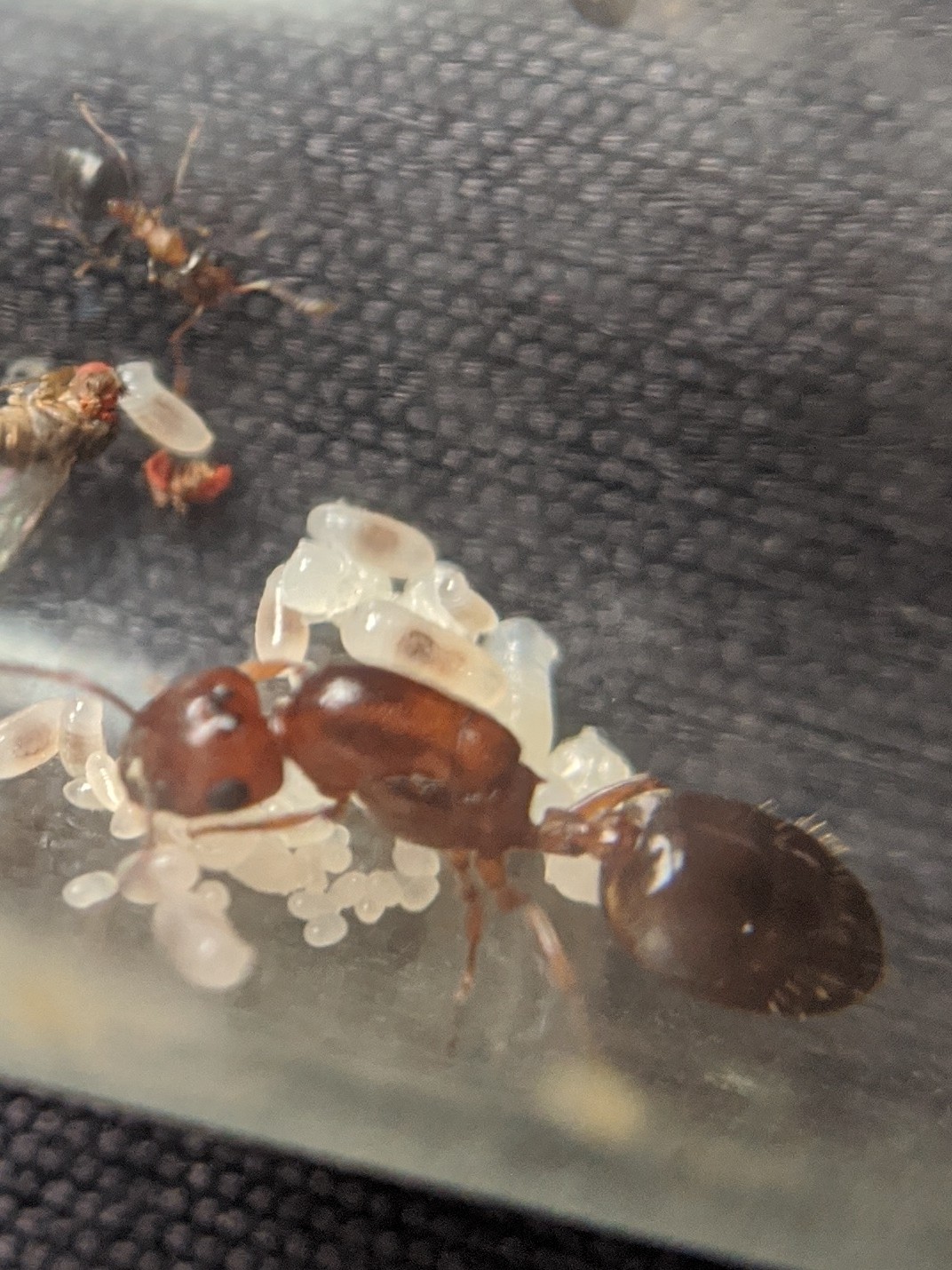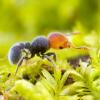2/13/2021:
As promised, I'm going to be updating all of my journals and am starting with this one. My Crematogasters have come a long way since they got their first workers almost four months ago; they now have an estimated seventy workers and massive amounts of brood. After the Christmas sale, I moved my colonies over to Tarheel Ants formicaria, including this one which got a mini hearth. Though at the time they seemed far too small for the nest, at about that time I switched to regularly feeding my ants crickets and they have quickly filled it up. Like most of my ants, my Crematogaster vastly prefer crickets to mealworms and my switch to using store bought crickets has allowed me to feed my ants in much more bulk than before, sparking growth in all of my colonies.
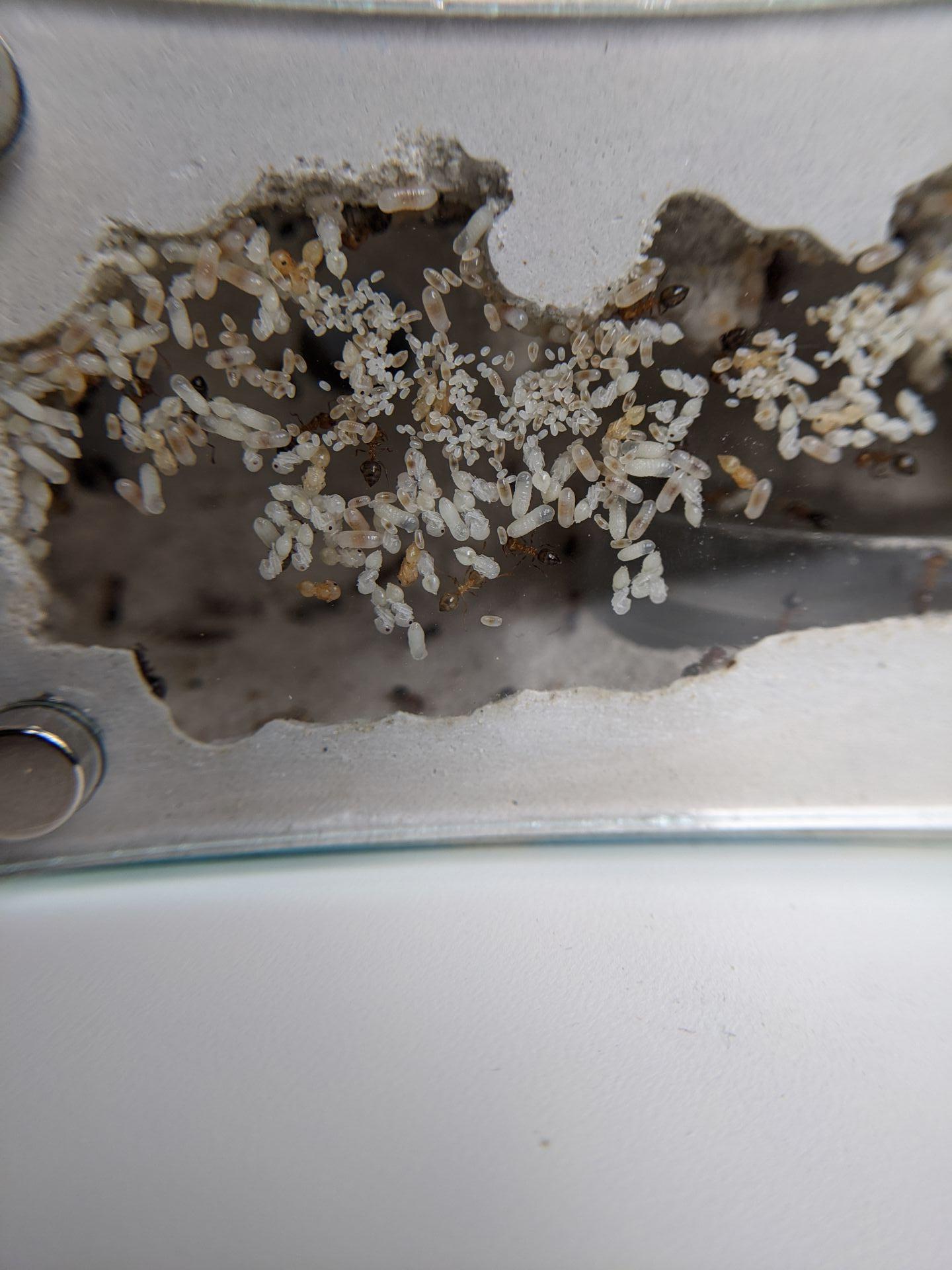
While many ants place their brood on the glass to block out light, much to my annoyance my Crematogaster have been doing it despite being kept inside my dark hot box. As a result, seeing anything inside of their nest is a challenge as you can see in the picture above. They are already showing the polymorphism typical of their genus, though it is not yet easily noticeable. They are very thirsty ants and quickly drain their water feeder and honey-cotton.
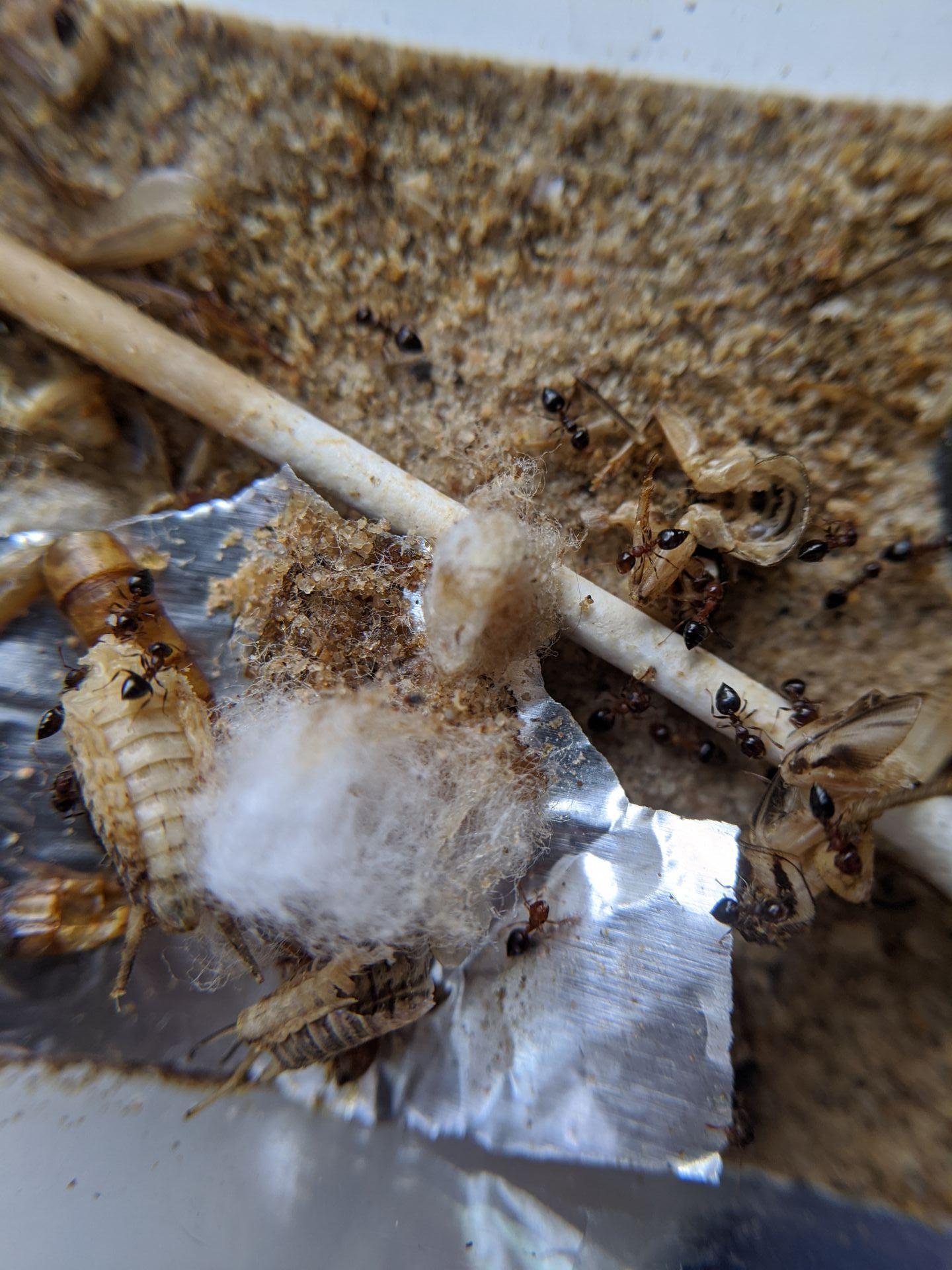
This picture shows their outworld, complete with the remains of several crickets as well as their current meal. They have an interesting style of feeding, where they will pull off and retrieve little bits of their prey to feed their larvae until all that remains is a layer of sand-like material which can be seen covering their outworld. I have seen this phenomenon in my Liometopum occidentale, as well as reading a description of it in Drew's Solenopsis xyloni journal so I wonder which other species eat this way. Neither my Novomessors, Camponotus nor Brachymyrmex eat this way. It's certainly an interesting behavior to watch, but I worry about how I will go about cleaning it up when it becomes a problem.
TestSubjectOne's Experiences in Antkeeping General Journal
Currently Keeping:
- Veromessor pergandei (1 queen, 600 workers)
- Novomessor cockerelli (1 queen, 200 workers)
- Myrmecocystus mexicanus (1 queen, 100 workers)
- Brachymyrmex patagonicus (3 queens?, 2,000 workers? & alates)
- Crematogaster sp. (1 queen, 600 workers)
- Liometopum occidentale (1 queen, 800 workers)
- Camponotus absqualator (1 queen, 130 workers)
